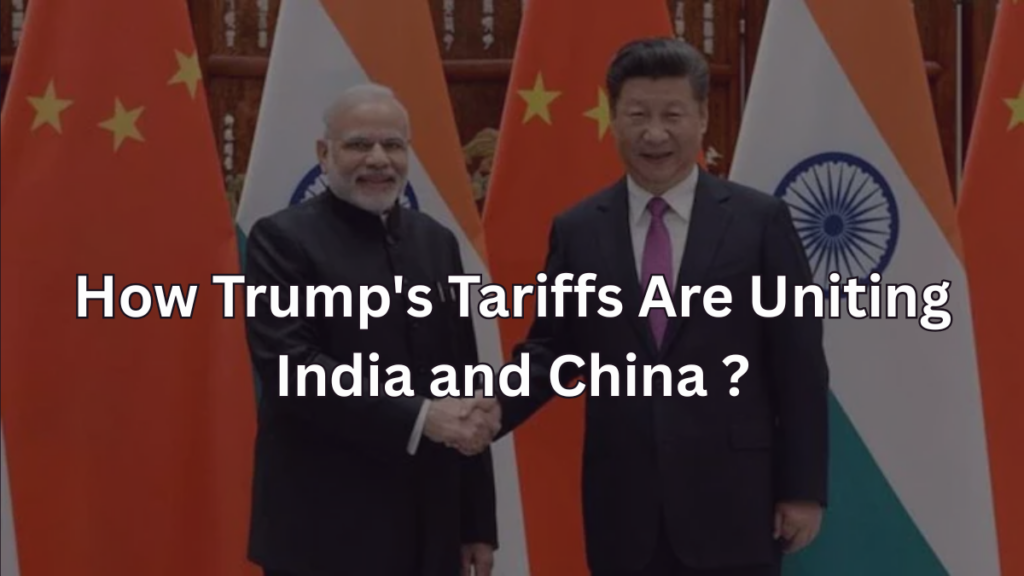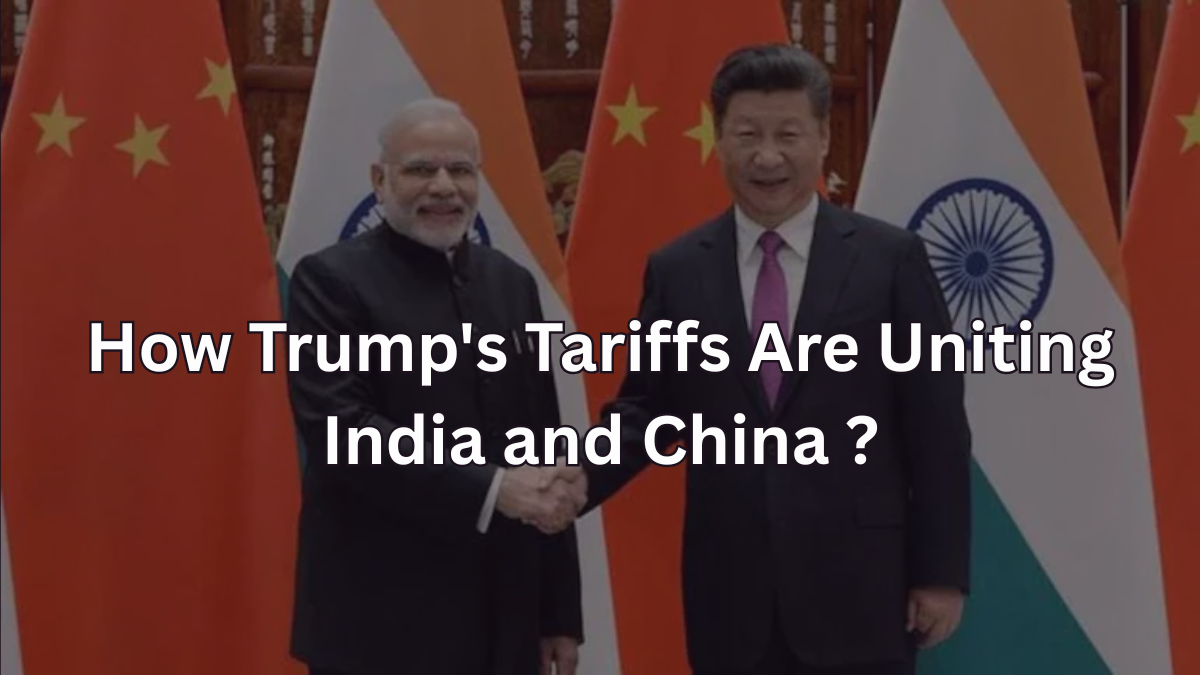In a move that has reshaped international diplomacy and global trade relations, former US President Donald Trump’s aggressive tariff policy has done something decades of diplomatic maneuvering couldn’t quite accomplish — nudging India and China toward collaboration.

The Unexpected Alliance: Elephant Meets Dragon
When Chinese Foreign Minister Wang Yi recently spoke of making the “dragon and elephant dance,” it wasn’t just poetic language. He was acknowledging a strategic shift — one that sees India and China exploring alignment in response to an economic storm brewing across the Pacific.
At the heart of this surprising collaboration? Donald Trump’s intensifying trade war with China.
What Triggered This?
-
Trump raised tariffs on Chinese goods to a massive 104%.
-
China responded with its own set of steep tariffs, slapping a 50% levy on U.S. imports.
-
The result? U.S. goods in China are now 84% more expensive.
China’s Outreach to India: A Strategic Pivot
Faced with an economic squeeze from the U.S., Beijing is making overtures toward New Delhi.
Key Statements from China:
-
The Chinese Embassy in India urged cooperation to overcome “tariff abuse.”
-
Embassy spokesperson Yu Jing emphasized:
“The China-India economic relationship is based on mutual benefits… the largest developing countries should stand together.”
-
The message wasn’t just aimed at India. It subtly warned Trump that “trade wars have no winners”, and called on nations to oppose unilateralism.
China’s Economic Leverage in Numbers
| Economic Indicator | China’s Standing |
|---|---|
| Contribution to Global Growth | ~30% annually |
| Current Tariff on US Goods | 84% after new 50% levy |
| Position on Multilateralism | Strongly supportive |
India’s Position: A Calculated Calm
Unlike China, India isn’t retaliating — at least not for now.
Current Tariff Status:
-
India faces a relatively “lenient” 26% tariff from the U.S.
-
Trump’s justification? While India is a “big abuser” of tariffs, his friendship with Prime Minister Narendra Modi seems to be tempering the blow.
-
The tariff includes:
-
10% base tariff on items like steel
-
Additional 25% on auto parts and seafood
-
Despite this, India remains diplomatic and appears focused on negotiation over escalation.
India’s Export Numbers at Risk
| Export Sector | U.S. Tariff Impact | Estimated Export Loss |
|---|---|---|
| Pharmaceuticals | Potential new levies | TBD |
| Auto parts | Additional 25% announced | High |
| Seafood | Additional 25% announced | High |
| Overall Export Risk | $89.91 billion (2024) | Up to $5.76 billion |
Diplomacy Over Defense: India-China Post-Galwan
Tensions post-Galwan (June 2020) brought India-China relations to a near-freeze. But the two nations have taken small yet significant steps toward de-escalation.
Recent Developments:
-
October 2024: A patrolling deal was agreed upon in Ladakh.
-
Followed by a high-profile Modi-Xi meeting, indicating diplomatic warming.
-
China’s Foreign Minister stated:
“We should never allow bilateral relations to be defined by the boundary question.”
The Bigger Picture: Global South’s Solidarity
Trump’s trade moves may have backfired in more ways than one:
-
They’ve not only hardened China’s stance against U.S. economic aggression but also pushed India and China closer, at least economically.
-
Beijing’s diplomatic tone has shifted from adversarial to cooperative with New Delhi.
-
As the world’s two most populous nations, India and China could represent a powerful bloc within the Global South, standing up to Western trade dominance.
Frequently Asked Questions (FAQs)
1. Why are Trump’s tariffs such a big deal for India and China?
Trump’s steep tariffs disrupt global trade, forcing countries like India and China to reassess alliances and economic strategies to cushion the impact.
2. Is India supporting China in the trade war against the U.S.?
Not directly. India is maintaining a neutral stance but is being courted by China for mutual cooperation in light of U.S. tariff aggression.
3. How badly will India’s exports be hit by these tariffs?
Analysts predict that India could lose up to $5.76 billion in exports, particularly in auto parts, seafood, and possibly pharmaceuticals.
4. Has this situation improved India-China relations post-Galwan conflict?
Yes, to an extent. Although deep-rooted tensions remain, recent agreements and high-level meetings suggest a thaw in diplomatic ties, especially on trade matters.
Click here to learn more
Pari is a passionate writer known for captivating stories that blend imagination and reality. Inspired by travel, history, and everyday moments, Pari crafts narratives that resonate deeply with readers.
